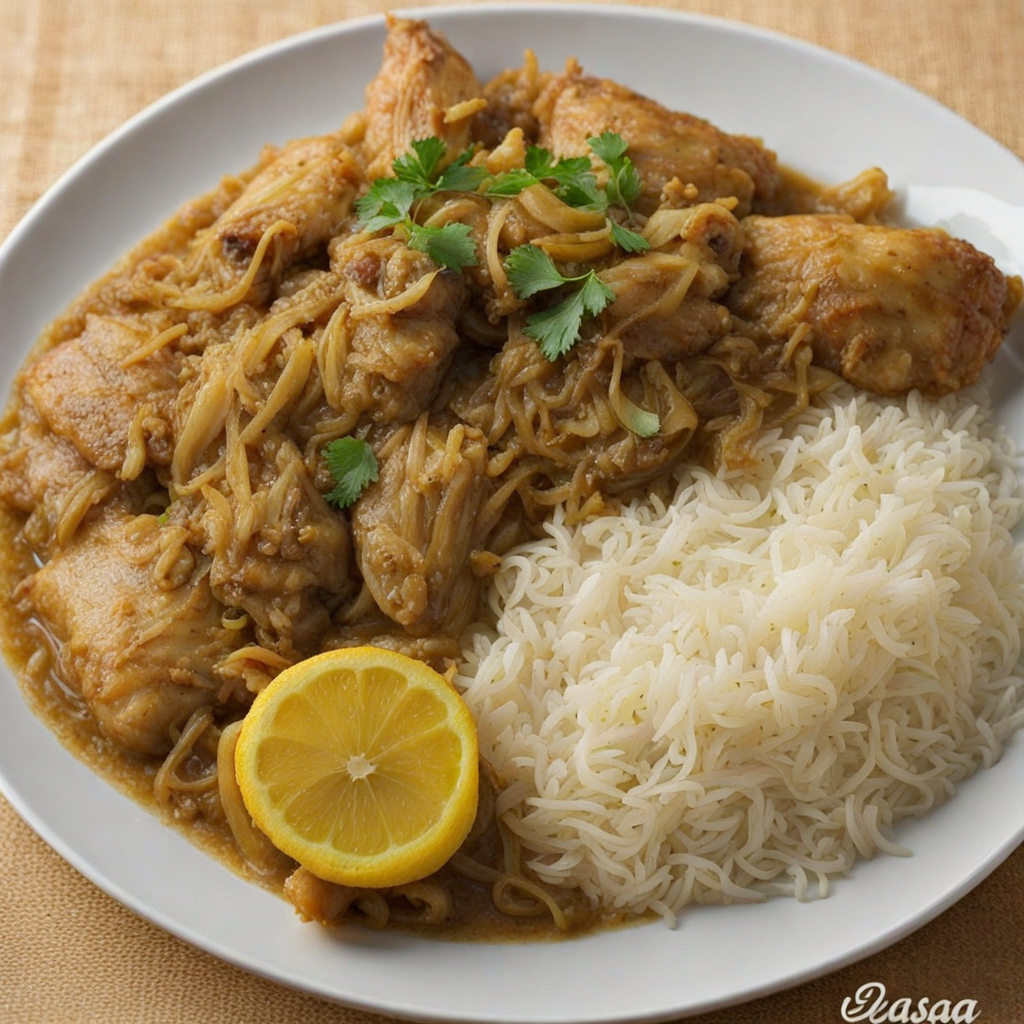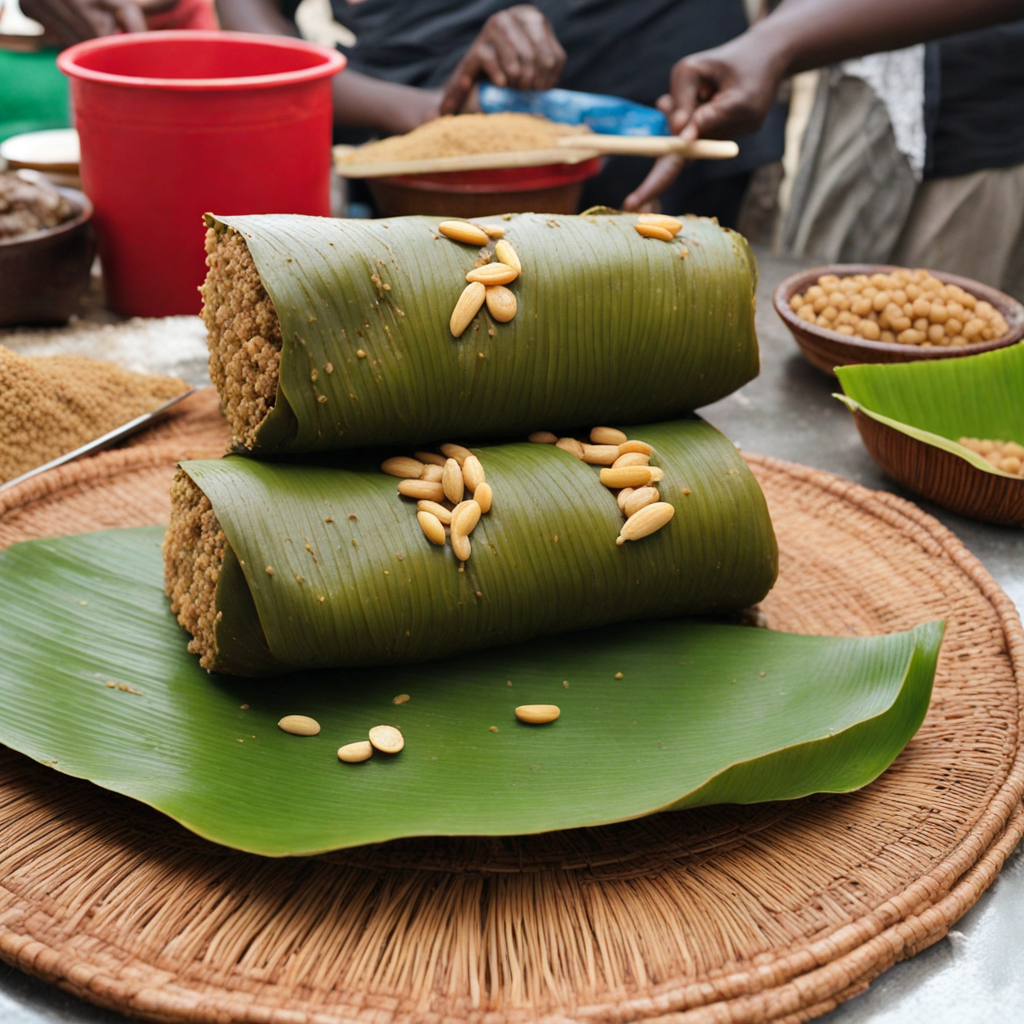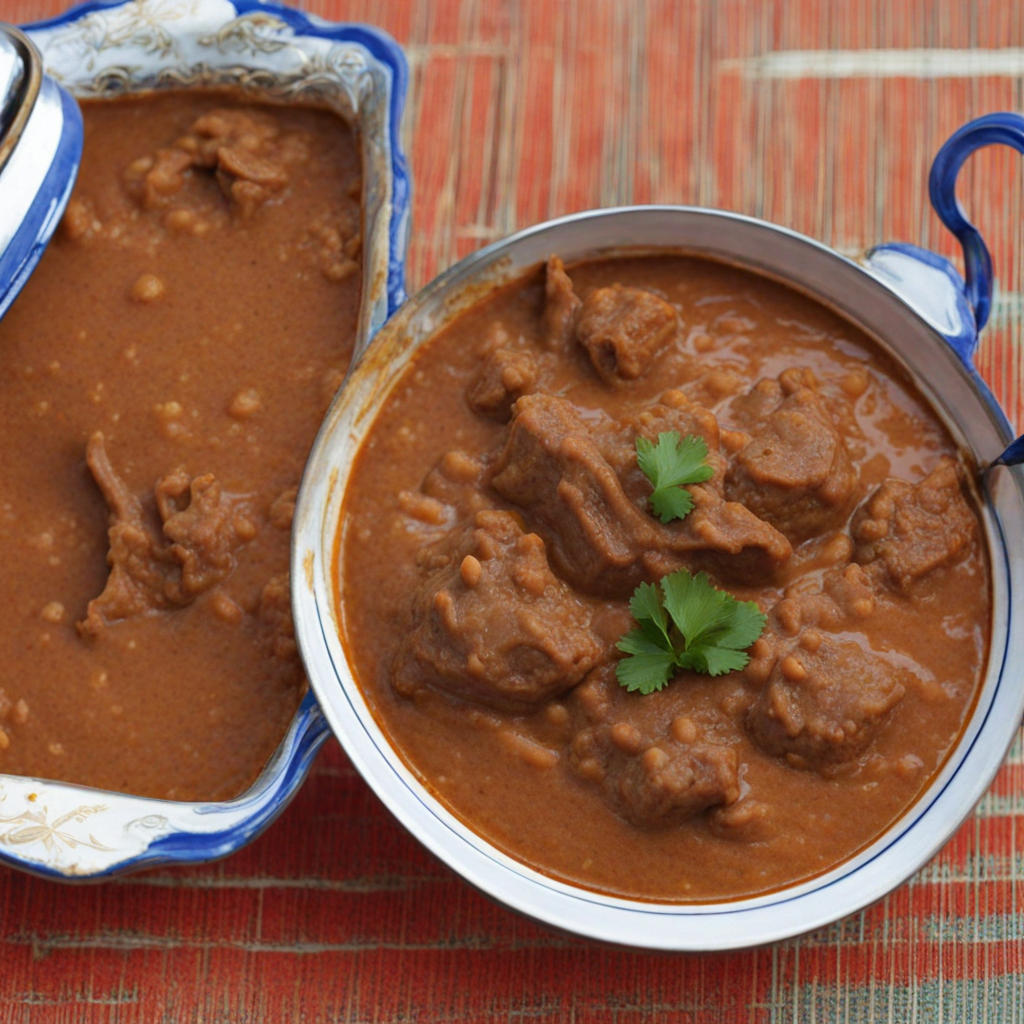Yassa
Yassa is a vibrant and tangy dish that hails from Senegal, celebrated for its bold flavors and aromatic profile. The dish is traditionally made with marinated chicken or fish, which is infused with a zesty mixture of onions, mustard, garlic, and lemon juice. This marinade not only tenderizes the protein but also imbues it with a delightful tartness that is characteristic of Yassa. The marination process can take several hours or even overnight, allowing the flavors to deeply penetrate the meat or fish, creating a dish that is both savory and refreshing. Once marinated, the protein is typically grilled or pan-fried until golden and crispy, then simmered in the remaining marinade along with caramelized onions that become sweet and soft as they cook. The result is a succulent dish that balances the sharpness of the marinade with the rich flavors of the cooked protein. Yassa is often served with a side of fluffy white rice, which beautifully absorbs the sauce and enhances the overall dining experience. The appeal of Yassa lies not just in its taste but also in its cultural significance, often enjoyed during gatherings and celebrations in Senegalese households. Each bite offers a delightful explosion of flavor, making it an ideal dish for those looking to expand their culinary horizons. The combination of the tangy marinade, the sweetness of the onions, and the grilled texture of the protein creates a harmonious blend that is both comforting and exciting, inviting food lovers to savor the essence of Senegalese cuisine.
How It Became This Dish
Yassa: A Culinary Journey Through Senegal Yassa, a vibrant and flavorful dish hailing from Senegal, is much more than just a meal; it is a reflection of the nation’s history, culture, and communal spirit. Characterized by its marinated chicken or fish, served with a tangy onion sauce, and often accompanied by rice, Yassa has become a culinary emblem of Senegal and a beloved dish across West Africa. #### Origins of Yassa The origins of Yassa can be traced back to the Wolof people, one of the largest ethnic groups in Senegal. The term "Yassa" is derived from the Wolof word "yass," which means "to marinate." This cooking method is not only a way to enhance flavors but also a means of preserving meat in the warm climate of West Africa. The use of vinegar, citrus, and onions in the marinade reflects the region’s agricultural bounty, where ingredients such as lemons, limes, and various spices are abundant. The dish is believed to have roots in the coastal areas of Senegal, particularly in the Casamance region, where fishing communities would prepare Yassa with fresh catches. Over time, as trade and cultural exchanges flourished in West Africa, Yassa became a staple in various households, adapting to local tastes and available ingredients. #### Cultural Significance In Senegal, food is an essential aspect of social life, representing not just sustenance but also community and identity. Yassa is often prepared for family gatherings, celebrations, and special occasions, symbolizing hospitality and togetherness. The dish is frequently served during religious festivals, weddings, and communal feasts, where sharing food strengthens bonds among family and friends. The preparation of Yassa is also a communal activity, where family members often come together to marinate the meat, chop the onions, and cook the dish. This collective effort speaks to the broader significance of food in Senegalese culture, where the kitchen often serves as the heart of the home. The act of cooking and sharing Yassa fosters a sense of belonging and continuity of tradition, passing recipes and techniques from one generation to the next. #### Development Over Time As Senegal's culinary scene evolved, so did Yassa. While the traditional version typically features chicken or fish, variations have emerged to cater to diverse palates and dietary preferences. Vegetarian adaptations of Yassa have gained popularity, utilizing ingredients like tofu or vegetables marinated in the same tangy sauce. The introduction of new ingredients and cooking techniques has also influenced the dish. For instance, the incorporation of local spices, such as pimento or African bird’s eye chili, adds depth and complexity to the flavor profile. Furthermore, the rise of globalization in the late 20th and early 21st centuries has led to Senegalese cuisine gaining international recognition, with Yassa being featured in restaurants worldwide. Chefs have embraced the challenge of interpreting this classic dish, often experimenting with fusion elements while honoring its roots. #### Yassa in Diaspora The Senegalese diaspora, particularly in Europe and North America, has played a crucial role in the globalization of Yassa. As Senegalese communities established themselves in new countries, they brought their culinary traditions with them. Food festivals, cultural events, and community gatherings often celebrate Yassa, allowing newcomers and locals alike to experience the flavors of Senegal. In this context, Yassa serves as a bridge between cultures, fostering understanding and appreciation for Senegalese heritage. Restaurants specializing in West African cuisine have emerged, offering Yassa as a flagship dish, often accompanied by traditional sides like jollof rice, attieke (fermented cassava), or plantains. The popularity of these establishments has contributed to a broader interest in exploring African cuisines, challenging stereotypes and promoting culinary diversity. #### Yassa's Place in Modern Senegalese Cuisine In contemporary Senegal, Yassa retains its status as a beloved dish, often enjoyed in homes and restaurants alike. It reflects the ongoing dialogue between tradition and innovation, as chefs experiment with modern techniques while respecting the essence of the dish. Food bloggers and culinary influencers have also played a role in revitalizing interest in traditional Senegalese dishes, showcasing Yassa through engaging recipes and vibrant photography on social media platforms. Moreover, the increasing awareness of the importance of sustainable and locally sourced ingredients has influenced how Yassa is prepared. Many cooks are turning to organic produce from local markets and supporting small-scale farmers, ensuring that the dish not only celebrates flavor but also promotes environmental responsibility. #### Conclusion Yassa embodies the rich tapestry of Senegalese culture, history, and communal life. From its origins as a traditional dish among the Wolof people to its status as a global culinary favorite, Yassa tells a story of resilience, adaptation, and celebration. The dish serves as a reminder of the power of food to connect people, preserve heritage, and foster shared experiences. As Senegal continues to evolve, so too will Yassa, adapting to the tastes and preferences of new generations while honoring its past. Whether enjoyed in a bustling Dakar eatery, a family gathering in Casamance, or a restaurant in a foreign city, Yassa remains a testament to the enduring significance of food as a cultural touchstone. Its journey is not just one of flavors but of stories, memories, and the vibrant spirit of Senegal.
You may like
Discover local flavors from Senegal







